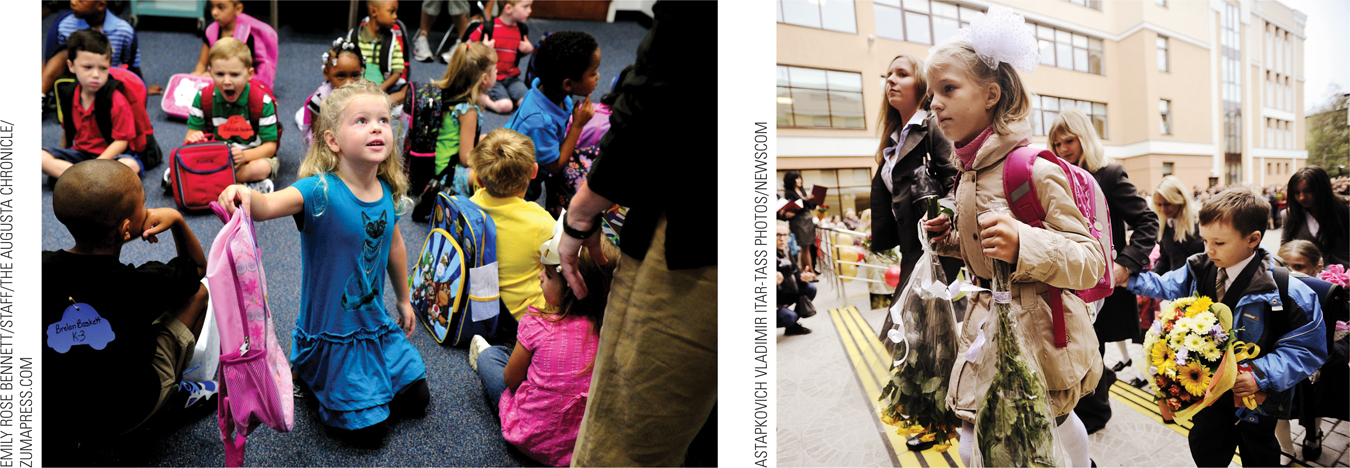What Theories Do
Every theory is an explanation of facts and observations, a set of concepts and ideas that organize the confusing mass of experiences that each of us encounters every minute. Some theories are idiosyncratic, narrow, and useless to anyone except the people who thought of them. Others are much more elaborate and insightful, such as the major theories described in this chapter.
A developmental theory is a systematic statement of general principles that provides a framework for understanding how and why people change as they grow older. Facts and observations are connected to patterns of change and explanations, weaving the details into a meaningful whole. A developmental theory is more than a hunch or a hypothesis, and is far more comprehensive than a folk theory. Developmental theories provide insights that are both broad and deep.
Kurt Lewin (1943) once quipped, “Nothing is as practical as a good theory.” Like many other scientists, he knew that theories can be insightful. Of course, theories differ; some are less comprehensive or adequate than others, some are no longer useful, and some reflect one culture but not another.
Questions and Answers
As we saw in Chapter 1, the first step in the science of human development is to pose a question, which often springs from a developmental theory. Among the thousands of important questions are the following, each central to one of the five theories described in this chapter:
Does the impact of early experience—
of breast- feeding or attachment or abuse— linger into adulthood, even if the experience seems to be forgotten? Does learning depend on specific encouragement, punishment, and/or role models?
Do children develop morals, even if they are not taught right from wrong?
Does culture guide parents’ behavior, such as how they react to a child’s cry?
Is survival an inborn instinct, underlying all personal and social decisions?
Each of these five questions is answered “yes” by, in order, psychoanalytic theory, behaviorism, cognitive theory, sociocultural theory, and the two universal theories, humanism and evolutionary theory. Each question is answered “no” or “not necessarily” by several others. For every answer, more questions arise: Why or why not? When and how? So what? This last question is crucial; the implications and applications of the answers affect everyone’s daily life.
To be more specific about what theories do:
Theories produce hypotheses.
Theories generate discoveries.
Theories offer practical guidance.
Facts and Norms
A norm is an average or usual event or experience. It is related to the word “normal,” although it has a slightly different meaning. Something can be outside the norm, but that does not make it abnormal.
To be abnormal implies that something is wrong, but norms are neither right nor wrong. A norm is an average—
For example, it is not the norm for police officers to spend their own money to buy boots for strangers, which is why DePrimo’s act generated headlines. But his act would not be called abnormal.
Do not confuse theories with norms or facts. Theories raise questions and suggest hypotheses, and they lead to research to gather empirical data. Those data are facts that suggest conclusions, which may verify or refute some aspect of the theory; however, other interpretations of the data and new research to investigate the theory are always possible.
Obviously, the scientific method is needed because “each theory of developmental psychology always has a view of humans that reflects philosophical, economic, and political beliefs” (Miller, 2011, p. 17). A theory can begin the process, but then scientists develop hypotheses, design studies, and collect and analyze data that lead to conclusions that undercut some theories and modify others. (Developmental Link: These five steps are explained in Chapter 1.)
Humans spontaneously develop theories about everything they observe. Some theories are better than others. Developmental theories are very useful: Without them, we would be merely reactive and bewildered, adrift and increasingly befuddled, blindly following our culture and our prejudices, less able to help anyone with a developmental problem.

SUMMING UP Theories provide a framework for organizing and understanding the thousands of observations we make and the daily behaviors that occur in every aspect of development. Theories are not facts, but they allow us to question norms, suggest hypotheses, and provide guidance. Thus, theories are practical and applied: They help us frame and organize our millions of experiences.
WHAT HAVE YOU LEARNED?
Question 2.1
What three things do theories do?
Theories produce hypotheses. Theories generate discoveries. Theories offer practical guidance.Question 2.2
What is the difference between a theory and a norm?
Theories raise questions and suggest hypotheses, and they lead to research to gather empirical data. A norm is an average or usual event or experience.Question 2.3
What is the relationship between theories and facts?
Theories raise questions and suggest hypotheses, and they lead to research to gather empirical data. Those data are facts that suggest conclusions, which may verify or refute some aspect of the theory; however, other interpretations of the data and new research to investigate the theory are always possible.